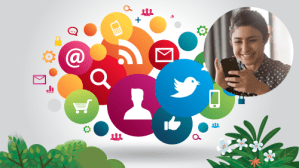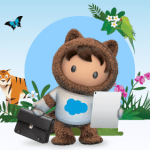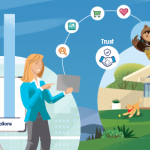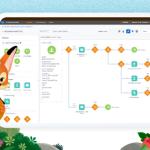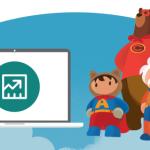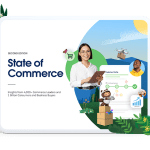The overarching goal of marketing has always been to connect with the right audience at the right time and place. With most people nowadays spending considerable time on the internet, marketers too need to reach out to them online – making digital marketing crucial for both big and small organisations.
Digital marketing enables you to target the customers most likely to purchase your goods or services, reach a wider audience, monitor progress daily and pivot as necessary. Consumers themselves anticipate and rely on digital content and marketing as a way to learn about brands. However, a broad-based advertisement or content intended to appeal to a generic audience will no longer work. Digital marketing without personalisation is irrelevant, especially in today’s evolving, competitive business landscape. The fifth edition of Salesforce State of the Connected Customer report reiterates this understanding. 79% of the Indian respondents expect offers from companies to always be personalised, while 89% expect companies to understand their needs and expectations.
So how can brands ensure personalised customer engagement through their digital marketing strategy?
By following clever strategies, you can engage your audience at every step, improve your conversion rate and increase your sales. Here are five such essential digital marketing hacks you should know:
1. Know what matters to your customer
Personalising a customer’s experience with your brand begins with getting to know the customer and their needs and expectations. Most of the customer interactions with the outside world, including your brand, are online and can provide valuable customer data. Use behavioural patterns, engagement metrics, order history, and affinity categories to identify customer personas and create comprehensive customer profiles. This helps you understand what the customer wants and how to make your digital marketing more effective. This paves the way for a hyper-focused strategy where the communication is transmitted to the target audience in a way that motivates them to advance through the sales funnel and convert into paying clients.
2. Create engaging content with a clear CTA
Compelling, actionable content tailored to a customer’s preferences is likely to elicit the highest levels of engagement from the customer. Click-bait content can drive online traffic for some time but for the content to perform for you in terms of generating awareness, leads, and sales, it must provide value to the reader. Thus, the content must be educational or engaging (or both), easy to read, appealing to the eyes, and easily understandable. It should include a clear call-to-action (CTA), such as a redirect to your website or the filling of a form, to nudge your customers towards taking the next step. It should also reach your customers on the platforms they are comfortable with.
One of the biggest mistakes businesses make is creating content with the expectation that it would immediately garner attention. Ideally, your content strategy should emphasise both short-term and long-term objectives.
3. Automate email marketing campaigns
Your marketing team loses out on excellent opportunities to grow and interact with your target audience if email marketing automation isn’t implemented. In addition to eliminating time-consuming tasks, email automation helps you categorise audiences and target them with relevant material. This keeps your brand at the top of your customers’ minds, enabling you to convert leads into customers and achieve better marketing ROI.
Email marketing automation solutions also help you keep track of a recipient’s actions. Did the client or potential client open your email? Did they click the link provided? How many times did they click that link? Using feedback metrics like the open rate, clickthrough rate, bounce rate etc, you can monitor and tweak your strategy to convert more leads to sales.
4. Perform A/B testing
With A/B testing, you can fine tune your messaging and create content that resonates best with a particular audience. In an A/B test, you create two versions of the same content (like two banner ads or marketing emails) and test the different versions for 7–14 days. Once the test period is over, you can evaluate the conversions and other data to decide which one performed the best. To further refine the results and improve your ongoing digital marketing strategy, you can repeat the tests in the future.
Many people mistakenly believe that A/B testing is only useful for email marketing. In reality, you can use it for many other types of material, including blogs, gated content, landing pages, online ads, etc.
5. Measure your actions
Personalisation is a process of continuous improvement—you need to constantly adjust your strategy and communication for each customer until you find the sweet spot. To determine the nature of the adjustments, you need feedback; this feedback can be collected by monitoring the customer response to your marketing actions. You need to periodically assess the effectiveness of your digital marketing strategy and perform cross-comparisons with competitors and your stated goals. Measuring your strategy also enables you to find unique ways to customise it as per the unique requirements of your target audience.
For instance, you may discover after a few months that your Instagram audience is actively engaged but Twitter is not performing so well. This could be a signal to review your entire Twitter approach, but it could also indicate that your audience prefers to access brand content through a particular channel. Measuring and monitoring your strategies can help you find relevant answers to questions like these and come up with new ideas on how to convert leads into sales.
These five digital marketing hacks will help you personalise the interactions between your brand and your customers, enabling you to connect with each of them on a 1:1 level, improve their engagement with you, and consequently, increase sales. However, you need the right tools to leverage the data you have or gather more data to gain better insights. Salesforce Marketing Cloud is a powerful tool that allows you to do all this and more.
Powered by AI, Marketing Cloud offers a unified hub where companies can build data-driven experiences for every channel. These include creating a unified customer persona, segmenting the data you collect, personalising customer interactions across platforms, and analysing and adapting your marketing strategy on the go. By including some of the data lacking in otherstandard marketing platforms, Marketing Cloud connection gives marketing analytics greater substance. Results of A/B email testing, performance metrics, and recipient tracking are all examples of data that can be included. Thus, Salesforce Marketing Cloud allows you to develop and build customer trust by putting intelligent and actionable customer data at your fingertips.
Interested in building customer relationships for life with data-first digital marketing?
Salesforce Marketing Cloud can help you



